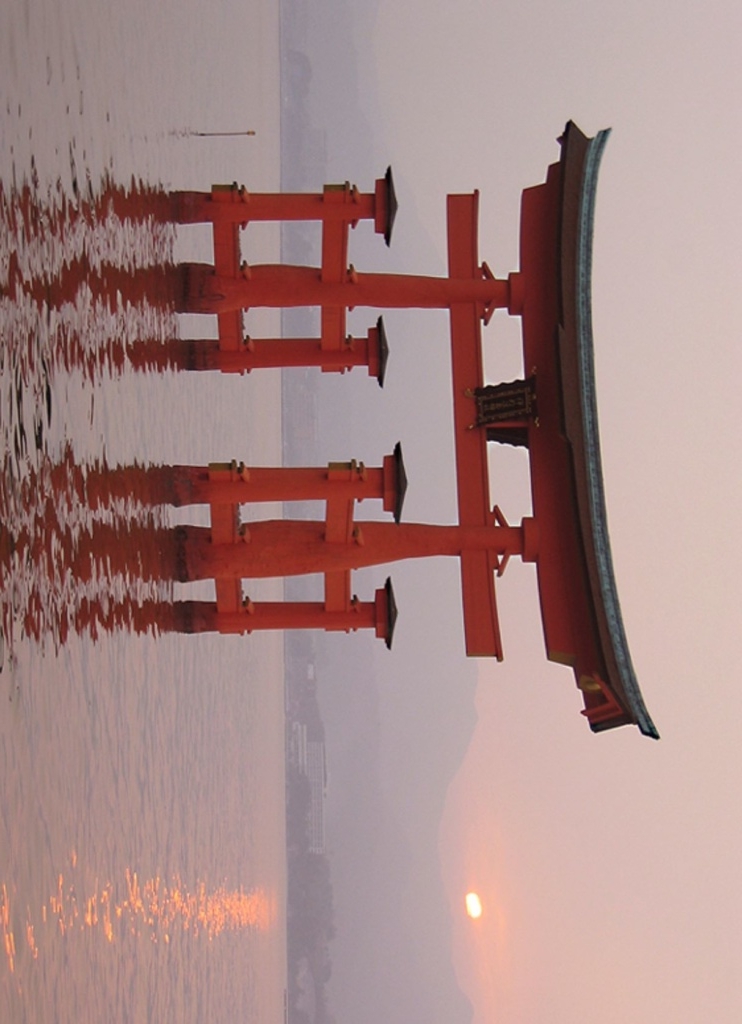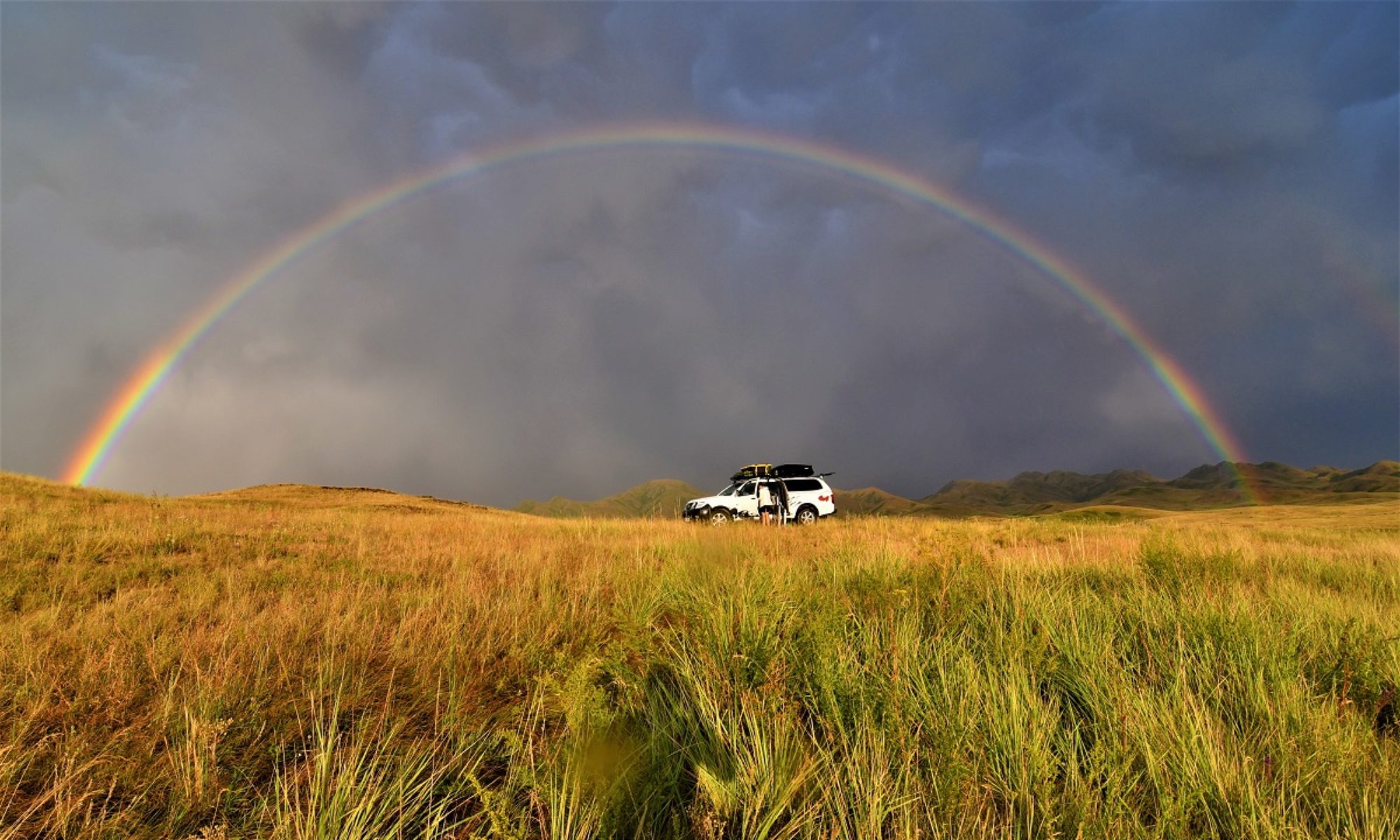Friday 30th August, 2019 – Sakaiminato
We made it! After driving just over 35,000 kms we are finally in Japan!
We had some delays at the port as we needed to go to a town 25km away to get our Carnet de Passage authenticated by the Japanese Automobile Association(JAF) This is the car ” passport” and a garantee for Customs that we are not bringing the car with the intention of selling it in the country. We need this document from the JAF office before our car can be released by Customs. The shipping agent representative is very helpful in providing details on how to get to the JAF office ( train and taxi or bus) but in the end we agree to go for the easier option: someone from their office will drive us there and back. (slightly cheaper than the train and taxi formula but still very expensive USD 102 …. and all this for rubberstamping a form in less than 10mn at the JAF office!
We are back at Sakaiminato for 1 pm and after another 15mns in the Customs Office, we are free to go. Our driver to the JAF office recommended to visit the Yusshien Gardens close by so we stop there on the way to Matsue.

We then carry on to Matsue, reputed for its castle.
Matsue Castle is a feudal castle nicknamed the “black castle” or “plover castle”. Built in 1611, the castle is surrounded by high stone walls and a moat. Matsue Castle is one of only a handful of castles in Japan that has not been destroyed by fire or war, making it one of only twelve original Japanese castles still standing. The black-painted wood of the castle’s keep gives a menacing effect to the six-story tower. Matsue Castle has the second largest donjon (keep) of all the twelve remaining original Japanese castles, is the third tallest at 30m and the sixth oldest. Inside are displays of arms and armor and the original shachi (mythical dolphins) of the castle’s roof. Shachi were believed to protect a castle from fire.
The interior timber construction is impressive and each floor is accessed via steep wooden stairs.
It is getting dark around 7pm so we have to find somewhere to camp. we leave the town and find a Michinoeki (rest stop for car drivers) not too far. These stops are all over Japan, usually in smaller towns on national roads and provide toilets, shop with local produce and a restaurant/ cafeteria. This one happens to be in the building of a nautical club and there are some showers for a small fee…. a real treat! We camp in the car park.
Saturday 31st August, 2019
We take the smaller roads on the way to Hiroshima. The road goes through densely forested hills with very tall trees. We stop at a sign pointing to a waterfall and have a 30mn walk through the forest. It is very humid. There are in fact 4 waterfalls, the last one being the most important.
We do not want to go into Hiroshima centre for the night, we saw a few Michinoeki on the way but not close enough to Hiroshima so in the end we settle for the car park of a Lawson Convenience store on the outskirts of town. Lawson Station is a chain of convenience stores offering, a small selection of food, cold and hot drinks and most importantly for us, free WIFI, boiling water and toilets! and they are open from 6 am to 11 pm… A godsend which will use repeatedly over the next few weeks…
Sunday 1 September, 2019 – HIROSHIMA
Hiroshima is forever linked to the first atomic bomb but today it is a modern city with a bustling port and a population of more than one million people. It has several tourist attractions but of course the majority of people come to visit the Peace Memorial Museum and Peace Memorial Park.
The Museum is a poignant reminder of the horrors of war and in particular of the devastation and people suffering after the drop of the first atomic bomb on Hiroshima on august 6th, 1945. Most of the city was destroyed, and by the end of the year 90,000–166,000 had died as a result of the blast and its effects. Documents, artefacts and personal testimonies of A-bombed survivors are on display and are a powerful message in support for peace and “No more Hiroshimas”.
In the park close to the Museum are the Cenotaph to the victims and various other commemorative monuments.
Monday 2 nd September, 2019 – MIYAJIMA Island and ITSUKUSHIMA Shrine
Miyajima Island is situated in the bay of Hiroshima and you can access it by ferry from Hiroshima or a small town further down the coast.
We took the 10mn ferry and made our way to the ITSUKUSHIMA Shrine. This Shinto Shrine is best known for its “floating” Torii Gate (unfortunately it is currently under renovation and is completely covered) .

The shrine and its torii gate are unique for being built over water, seemingly floating in the sea during high tide. The shrine complex consists of multiple buildings, including a prayer hall, a main hall and a noh theatre stage, which are connected by boardwalks and supported by pillars above the sea.
Religious significance
Miyajima Island has a long history as a holy site of Shinto. The island’s highest peak, Mount Misen, was worshiped by local people as early as the 6th century. In 1168, Taira no Kiyomori, the most powerful man in Japan at the time, selected the island as the site of his clan’s family shrine and built Itsukushima Shrine.
“The Itsukushima shrine is dedicated to the sanjoshin or “three female deities”, these Shinto deities are the goddesses of seas and storms. . In Japanese, Itsukushima translates to mean ” island dedicated to the gods” In fact, the island itself is also considered to be a god, which is why the shrine was built on the outskirts of the island. Originally Itsukushima was a pure Shinto shrine “where no births or deaths were allowed to cause pollution. Because the island itself has been considered sacred, commoners were not allowed to set foot on it throughout much of its history to maintain its purity. Retaining the purity of the shrine is so important that since 1878, no deaths or births have been permitted near it. To this day, pregnant women are supposed to retreat to the mainland as the day of delivery approaches, as are the terminally ill or the very elderly whose passing has become imminent “. (wikipedia)
We were lucky to see a Shinto wedding ceremony during our visit.
